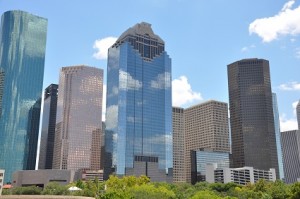Spotlight on Business in Houston
 Since the discovery of oil in Houston, Texas in 1901, the city has relied on energy revenue for its growth and survival. That means that Houston followed the trends of energy prices, which took nose dives in the 1970’s, 1980’s and 2000’s. But each time, Houston was able to bounce back and open up new areas of energy exploration and refining that have allowed the city to grow. As time has gone by, Houston has learned to diversify its economy and a new Houston is starting to emerge from under the shadow of the energy industry.
Since the discovery of oil in Houston, Texas in 1901, the city has relied on energy revenue for its growth and survival. That means that Houston followed the trends of energy prices, which took nose dives in the 1970’s, 1980’s and 2000’s. But each time, Houston was able to bounce back and open up new areas of energy exploration and refining that have allowed the city to grow. As time has gone by, Houston has learned to diversify its economy and a new Houston is starting to emerge from under the shadow of the energy industry.
One of the industries that Houston has turned to for balancing out the energy sector is the chemical manufacturing industry. Today, the city of Houston and its associated industries produce almost 40 percent of all of the basic chemicals used by domestic and international industry. It is estimated that nearly 40,000 people in Houston area work in the chemical manufacturing and refining industry.
Along with energy and chemical manufacturing, Houston also relies heavily on the technology sector for jobs. The space exploration and engineering industry in Houston employs well over 17,000 people as scientists and engineers. The Houston economy benefits significantly from its abundance of high-paying jobs.
Key Economic Drivers in Houston
While Houston benefits greatly from advances in its energy and chemical industries, one of the prime economic drivers for the city’s economy is its growth in the service industries. Nearly 16 percent of the Houston working population work in insurance sales, real estate and personal finance. This number continues to grow and so does the revenue generated by these industries.
Houston has also taken to offering incentive packages to companies willing to establish offices in the inner-city areas. The city refers to these areas as Reinvestment Zones and there is a significant drive by the city to revitalize its inner-city areas to boost the economic stability of the entire region.
Office Rental Statistics in Houston
The office vacancy rates for the areas in and around Houston are quite low and have been dropping for sometime. As of September 2014, the vacancy rate for the Downtown District stood at 8.8 percent. For the entire city of Houston, the vacancy rate for all office space is 9.8 percent. This is a number that rivals fast-growing cities such as San Francisco and Las Vegas.
In total, the city of Houston has 1,264 office buildings offering 224,978,759 square feet of office space. But as of September 2014, only 20,911,380 square feet is immediately available for rent.
Cheapest Office Rent in Houston
As with all metro office space throughout the United States, Houston office space is separated by Class A and Class B rates. Class A buildings are the more prestigious buildings with the premier locations, while Class B buildings are the functional buildings that do not offer the premier locations or amenities that the Class A buildings offer.
In Houston, the cheapest office space is found in the Class B buildings of the FM 1960 District. Office space in Clear Lake is renting for $15.32 per square foot and Clear Lake as a vacancy rate of 15.2 percent. Development of new space in the FM 1960 District has slowed as the city is only adding 770,000 square feet of new space in 2014.
Most Expensive Office Rent in Houston
The Class A office complexes of Houston’s Downtown District command the highest rents in the city at a cost of $41.62 per square foot. Prestige still reigns supreme in the business world as the Downtown District vacancy rate is the one of lowest in the city at 8.8 percent. As of 2014, the city of Houston was in the process of adding 1,626,638 square feet of new office space in the Downtown District.
For further information about office space in Houston available for immediate rental click here.
http://www.city-data.com/us-cities/The-South/Houston-Economy.html
http://www.transwestern.net/Market-Research/Documents/Southwest%20-%20Houston%20Office%20MarketWatch%209.14.pdf
http://www.boma.org/research/pages/building-class-definitions.aspx